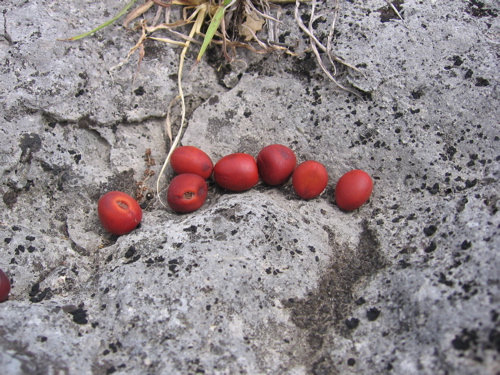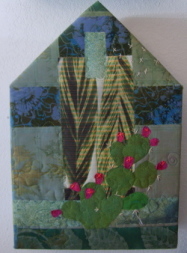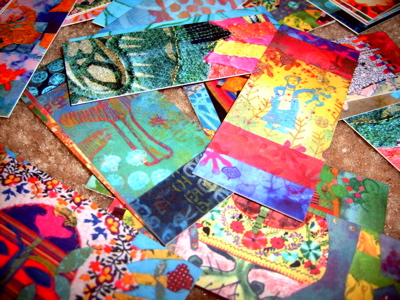Artist Lisa Call sent me via blog to marketer and cartoonist Hugh McLeod's site where I found his most popular page "How To Be Creative".
His compilation of a series of posts about creativity and marketing one's creative products is worth more than a casual read. MacLeod seem quite on target to me, but I wondered if I could come up with my personal top 5 "How To Be Creative" rules. Today was a perfect opportunity to keep a little thread going in my back brain, since much of the front (as well as hands and feet) have been devoted to a much-needed house cleaning (the studio still awaits).
Here's what I came up with:
1. It helps to narrow, not broaden, the field.
My most creative and interesting work has come after erecting some interesting parameters and staying within them. I could only develop a "body of work" when I made some decisions to focus on a personal vein of expression that could be mined again and again. Skipping around between media and content was, for me, a way to avoid getting beyond the facile.
2. Persistence is more important than inspiration.
And persistence means getting my hands on my work as many hours, as many days each week as I can. No excuses. No waiting for the muse.
3. When it's not working, back off.
While this sounds like the opposite of #2, it's actually a call to have more than one project on the table, more than one stage of the process in process. If I let something sit around on my big table in the studio, at what ever stage it starts feeling forced, eventually something shifts and the next step appears. Meanwhile, I can keep keeping on with another project that's in another stage of development. This is one reason I like dyeing and printing fabric. I can ALWAYS go mix up a bucket of dye.
4. Don't scrimp on the good stuff.
Eat beans and rice if you must, but don't expect to make art without the stuff of transformation necessary for your creativity. I gotta have dyes, paints, thermofax film, lots of fabric, WonderUnder and batting. Fancy tools and materials may not make the artist, but if you don't have the things that are essential elements for your art, you won't make any. Know your basics and keep them stocked. Do without the rest if you must. I still use a 1950s sewing machine because I haven't been able to justify the expense of a new fancy one, but in truth, it does the job, and I'd rather know I have the cash for new batch of dyes, a bolt of silk noil and -- OK -- a trip to Italy next May.
5. Know what works for you. Honor, protect and defend it.
I think the creative process is different for each of us. We each need feedback and interaction with others at different times in the process; we might need solitude and quiet, or raucous hubbub and a loud stereo at another point. Maybe you start with with your hands or maybe your ears or a swatch of red muslin. You might need a grand map and a fountain pen. You might need three days alone or five minutes looking out the window and the next four years collecting images and facts. Whatever it is you need, you better have it tagged and sorted. Know when to hold, to fold, to keep it very, very quiet.
This isn't as easy as it sounds, because it requires a good deal of self observation and tolerance for your own foibles. I've been fortunate. From childhood -- even professionally -- I've been nurtured by a culture that honors self-knowledge in the realm of creativity -- something quite different than personality, by the way. This culture of nurturnance of creative work and individual process is what I strive to shape for the workshops here at El Cielo Studio.
 Friday, October 20, 2006 at 07:05PM
Friday, October 20, 2006 at 07:05PM 








